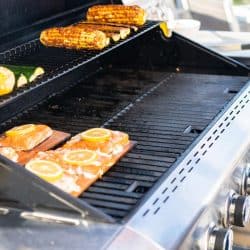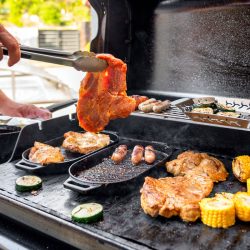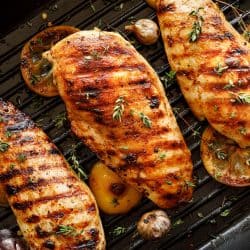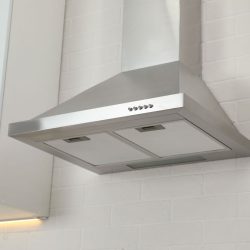Nothing beats the aroma of a charcoal grill getting fired up to get us salivating and ready to celebrate a special occasion, but charcoal grilling can be challenging. It's easy to be perplexed as to how to operate the vents. Is it really that important? Fortunately, we are here to answer your questions and share with you what we have discovered.
To use the top vents, keep them slightly open at all times to generate a low pressure inside the grill that draws oxygen in through the intake vent. By opening the top vent, smoke and combustion gases are allowed to escape, preventing the fire in the grill from being smothered.
As you can see, using the top vents is extremely simple. In this post, we will delve deeper to learn more about your charcoal grill. So, keep reading until the end to get more information that you can use in the future.
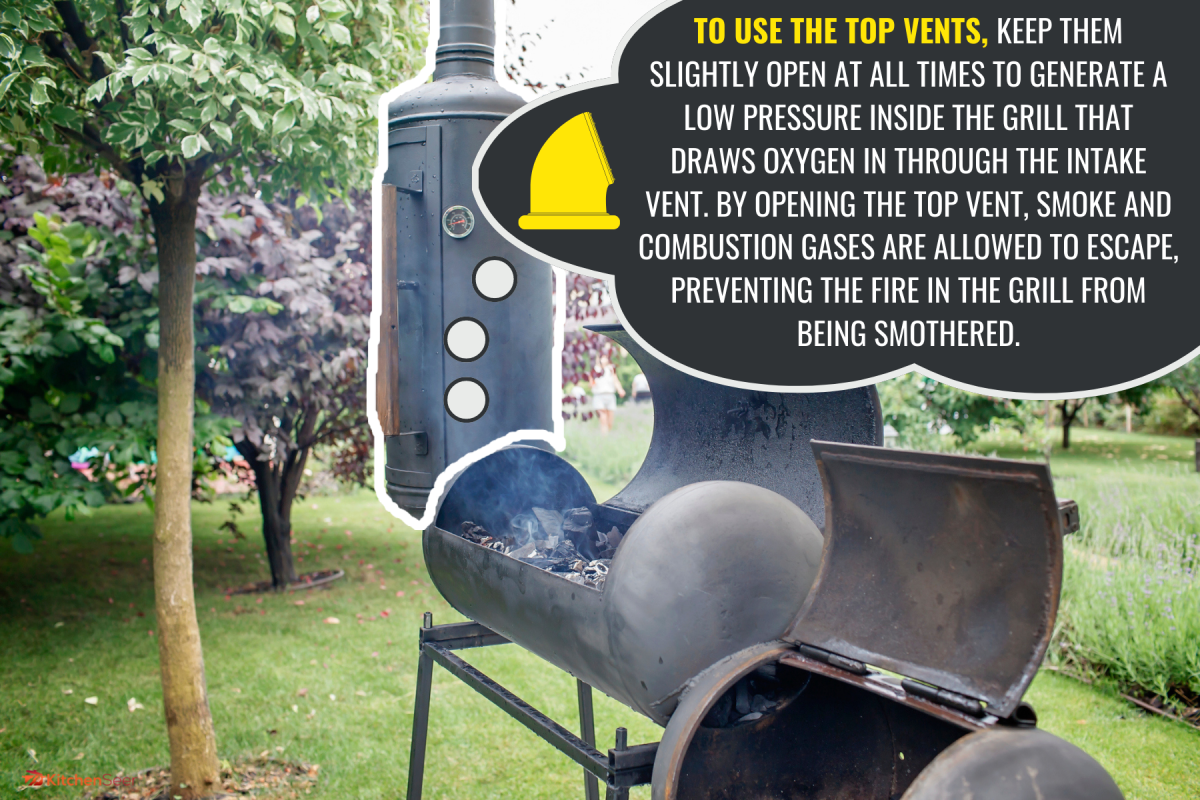
What Is The Purpose Of The Vents?
The temperature is controlled using vents. You must be able to manage the heat after starting a nice fire with the proper briquettes.
The vents on your charcoal grill aid in the regulation of the air passage into and out of the grill, allowing you to control the temperature. Too much oxygen can cause your charcoal to flare up, while too little oxygen can cause it to burn out.
You can manage the temperature of your charcoal grill by lowering or raising the vents.
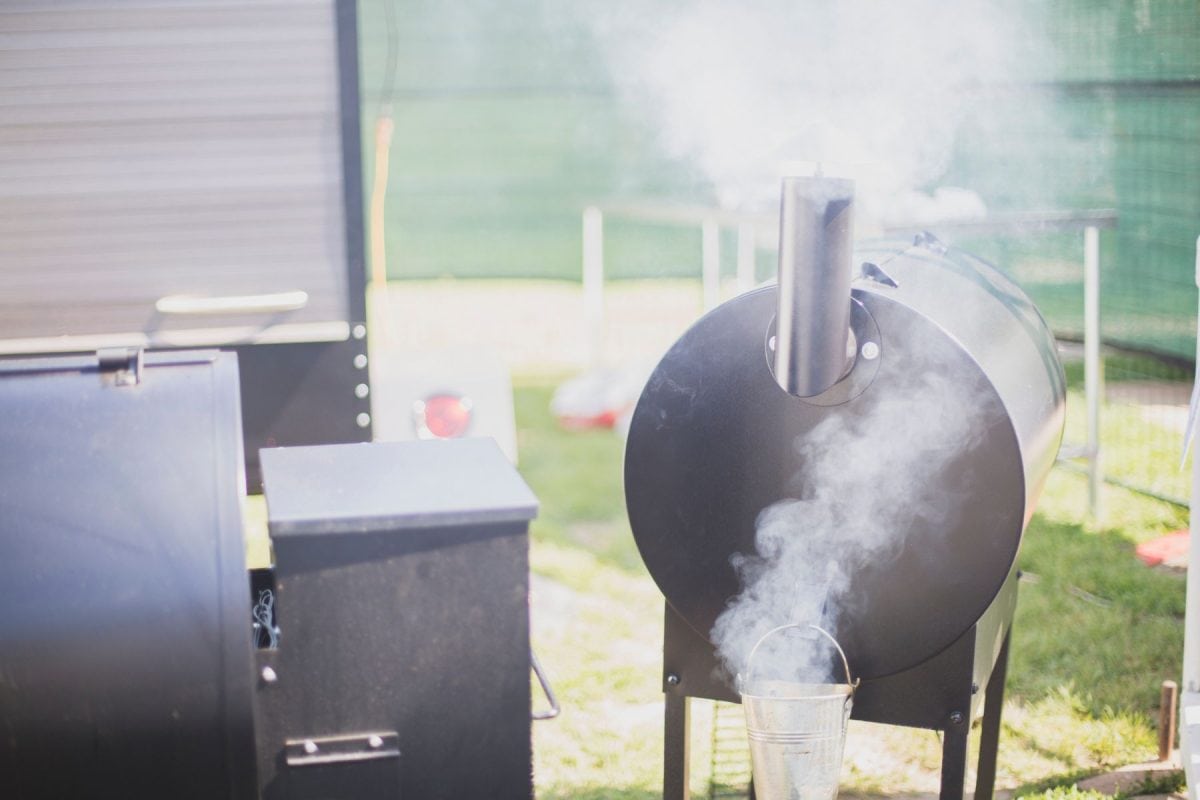
How The Top And Bottom Vents Work
The top and bottom vents on your grill each serve a different purpose.
Top Vents
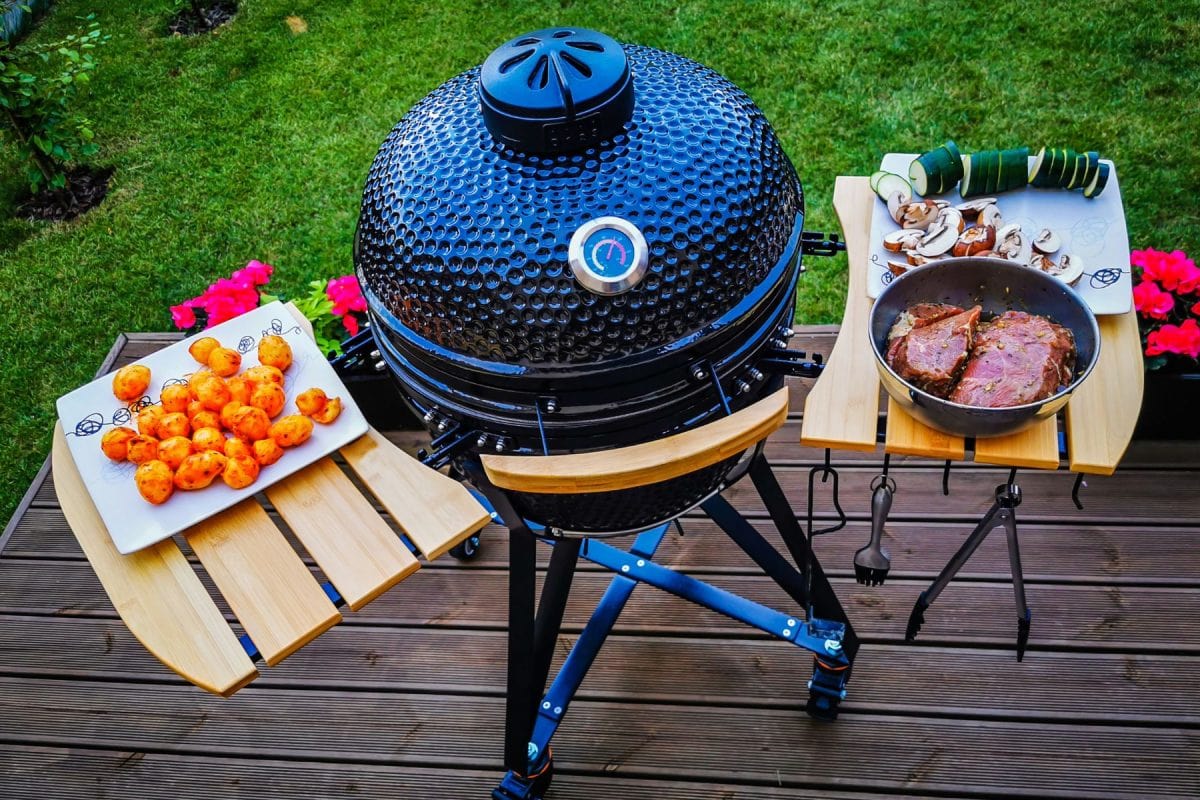
Consider the vents on the top as a chimney. They exhaust hot air and smoke from the grill's top, which draws air through the bottom grill vents.
The top vents are more important than you might think because this exhaust is absolutely essential to how much air gets into the grill.
You'll put out the fire if you close the top vent. Most of the time, it's best to leave them completely open and use the bottom vents to regulate grill temperature.
Bottom Vents
The bottom vent on charcoal grills serves only one purpose and that is to supply oxygen to the fire.
Consider them to be intake ports, sucking in air to replace the oxygen consumed during combustion. The more air there is, the hotter the fire will be. The less air there is in the grill, the cooler it will be inside.
How To Use A Charcoal Grill?
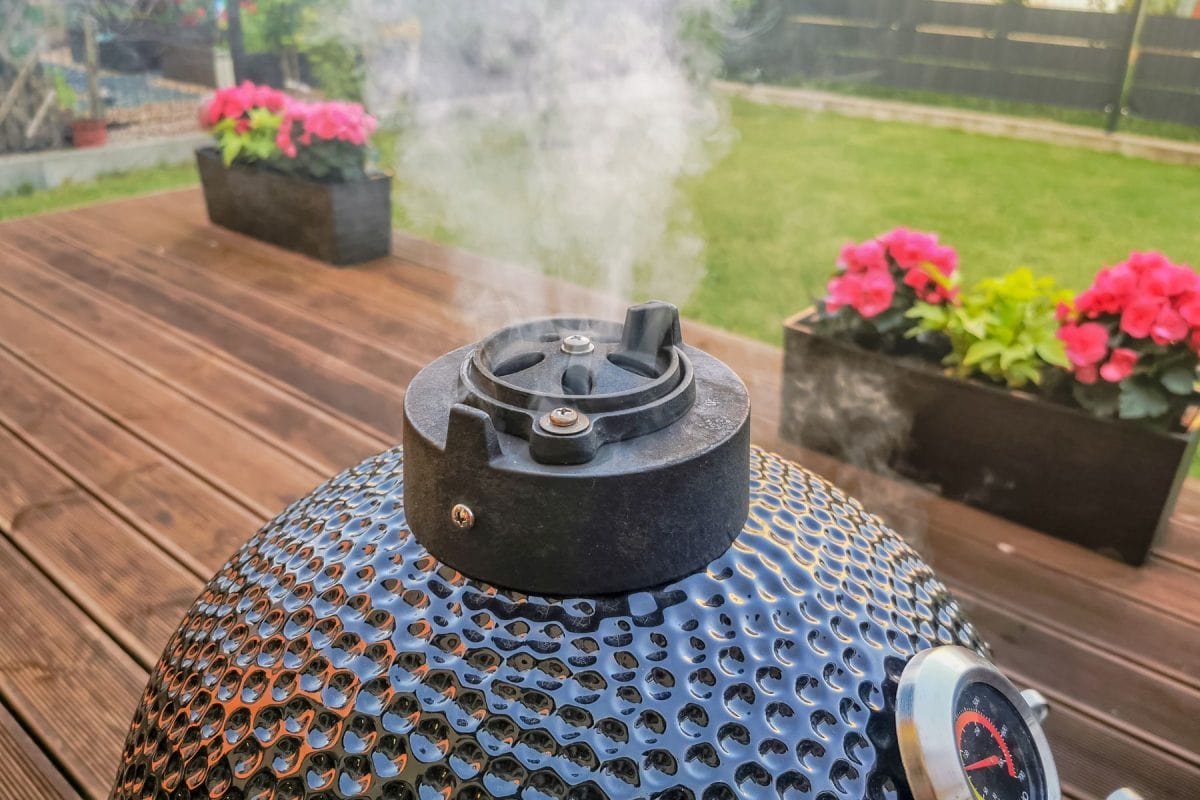
Charcoal grills are more difficult to use than gas grills, but they provide more flavor to food. This is where you will learn for the first time how to use a charcoal grill.
Step 1 - Prepare Your Charcoal Grill
Before you begin grilling, season your grill. That implies cleaning the grates and then spritzing them with a high smoke point oil, such as vegetable or canola oil.
Step 2 - Light The Grill
Most grills require about three pounds of charcoal, but you should base the amount of charcoal you use on the size of your grill to avoid overfilling it.
With the charcoal in place, make sure the vents are open before lighting the grill. Depending on the lighting method, wait 15 to 30 minutes before beginning to grill.
Step 3 - Rearrange The Coals From Direct And Indirect Heat
Push your charcoal to one side of your grill. This area will be hotter and will be used for all direct heat grilling.
When the food is placed directly above the source of heat, it sears and traps the juicy flavors. Arrange the coals in the bottom of the firebox to grill your food.
The side that does not have the coals will still be hot, but not scorching. This is the area of indirect heat. Grill foods that require 20 minutes or more to cook, such as larger or tougher cuts of meat, over indirect heat.
You can also keep foods warm by using the indirect heat area of your grill.
Step 4 - Maintain Your Grill Temperature
The air that flows through the adjustable vents on the top and bottom of the grill is primarily used to control the temperature. By opening the vent at the bottom of the grill, more oxygen enters and the fire burns hotter. Closing this vent reduces the amount of air that enters the grill, lowering the temperature.
Heat and smoke can escape through the vent at the top of the grill, lowering the temperature. Closing the top vent traps smoke and heat inside the grill, gradually raising the temperature and imparting a delicious smoky flavor to the food.
Step 5 - Put Out The Fire
When you're done grilling, close the lid and close the vents to smother the hot coals. This will cut off the oxygen supply and prevent the coals from burning.
Wait up to 48 hours for the coals and ash to completely cool before removing the coals and cleaning out the ash.
What Types Of Charcoal Can Be Used In A Charcoal Grill?

Traditional charcoal grills typically use two types of charcoal, which are lump charcoal and charcoal briquettes.
Lump Charcoal
This type of charcoal is produced by burning wood with very little oxygen, removing all gases and moisture from the wood, and leaving pure carbon lumps that are roughly the shape and size of the original wood.
Since it does not use binders or petroleum-based combustible materials, this process is healthier than the one used to make charcoal briquettes. The disadvantage of lump charcoal is that it is more expensive and burns for a shorter period of time than charcoal briquettes.
Click to see this Lump Charcoal on Amazon.
Charcoal Briquettes
Charcoal briquettes are equal in shape and size because they are made from a ground-up mixture of wood scraps, borax, coal dust, sawdust, and petroleum binders.
Given these additives, charcoal briquettes are less expensive and burn longer than lump charcoal. However, using this type of charcoal poses a relatively high health risk.
Click to see this Charcoal Briquettes on Amazon.
Can You Reuse Your Charcoal?
Yes, absolutely. Any coals that haven't been completely ashed over and still preserve their shape and size can be reused. We recommend moving charcoal with an old pair of tongs if it has already cooled and is safe to move.
What Are The Factors That Can Affect Charcoal Grilling?
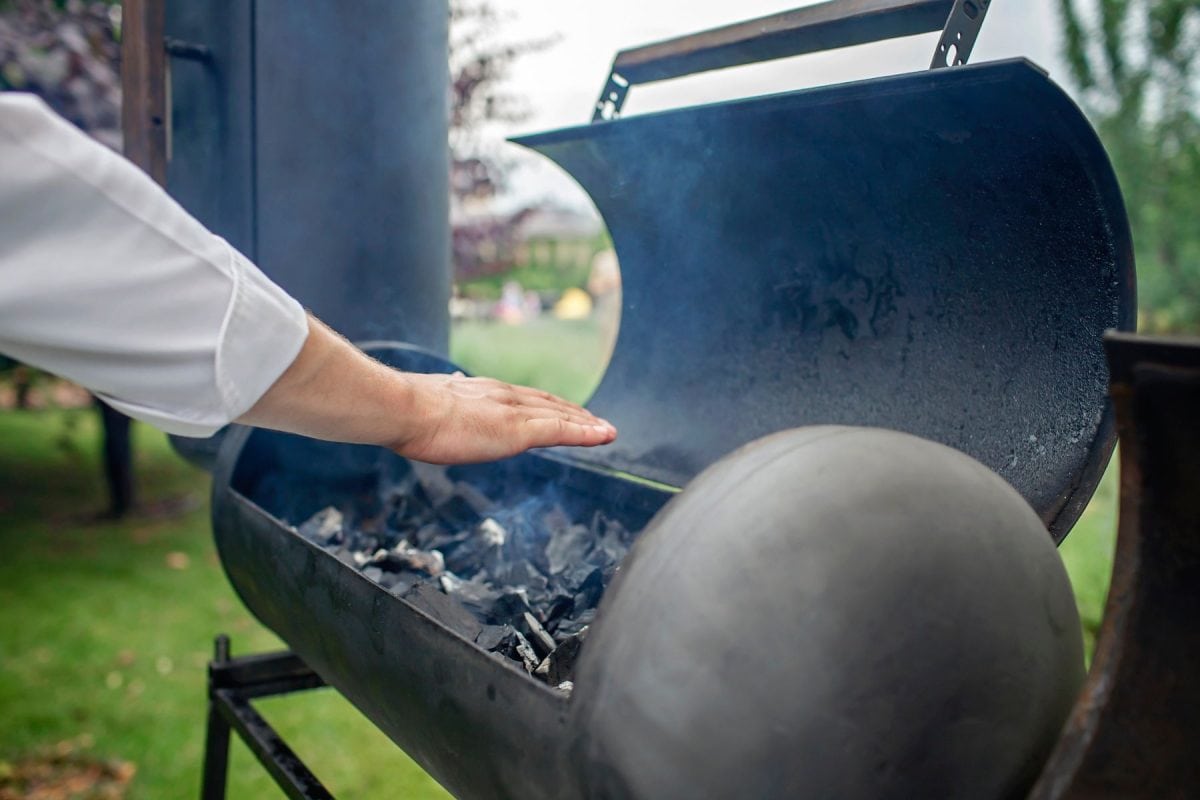
Understanding temperature control through the use of your grill's vents isn't the only thing to think about when grilling. Here are a few more things to think about.
Quality Of Charcoal
The quality of your grill will only ever be as good as the charcoal you use, so if you use substandard fuel, you will only get substandard results.
Instead of using cheap briquettes, invest in high-quality lump charcoal. These have much purer ingredients than briquettes and far fewer fillers.
This means that your smoke will be much cleaner, and your food will taste much better. They will also burn much longer, which means you won't have to open the lid of your grill to replace the charcoal.
Windy Conditions
Given the importance of airflow in charcoal grilling, it’s clear that wind exposure can have a significant impact on your cooking.
It will affect not only the airflow through your vents, but if any part of your grill surface is exposed, it may be vulnerable to changes in direction and wind speed.
This could significantly increase the flames, or the wind could be so strong that it completely clears away your fire.
Air Leaks
Since grills are unbreakable, wear and tear do occur over time. It's not uncommon for older charcoal grills to rust or crack, leaving them vulnerable to air leaks, especially around the rim of the lid.
This effectively adds another exhaust, allowing more air to enter or exit even when your main vents are closed. This can cause your grill's temperature to disrupt, potentially ruining your grilling.
Tips For Charcoal Grill Maintenance
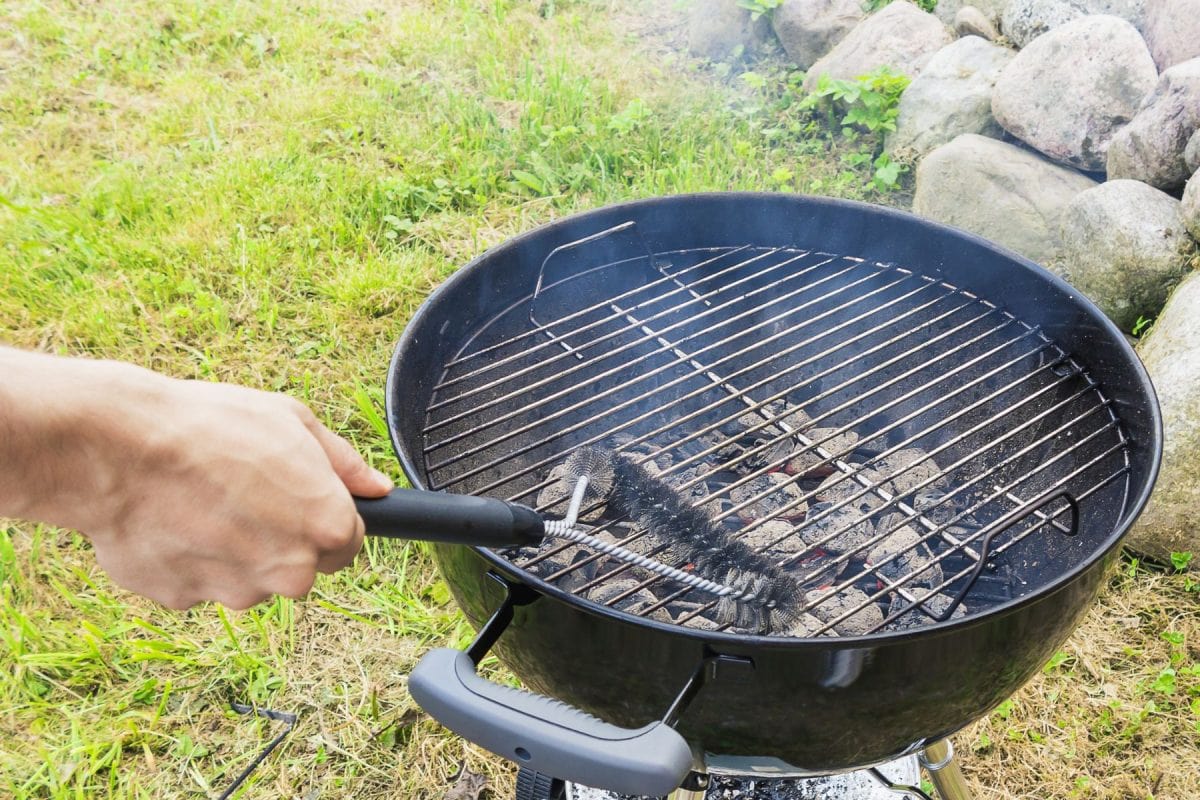
Cleaning your grill on a regular basis is the most essential thing you can do to keep it in a good condition. A thorough cleaning should be performed at least once a season, either when storing the grill for the year or before using it for the first time.
Remove the grill grates, then use a soft-bristle brush to scrub the inside and outside of the grill to remove any oil, charcoal, or rust that has accumulated.
When the coals and ashes have completely cooled, empty the firebox and ash receptacle. Remember that this could take a few days, so there's no need to empty the bottom of the grill right away.
However, after each use, clean the grill grates and cooking chamber to remove any stuck-on food or sauce.
Click to see this Cleaning Grill Kit on Amazon.
Final Thoughts
You now have all the knowledge you need to use the top vent of your charcoal grill. You are also well aware that you can control the temperature of your grill using the grill vents. Once you've mastered some techniques and have a basic understanding of how temperature control works, the sky's the limit for what you can cook on your grill.
Check out these other informative posts:
How Long To Grill Burgers [Charcoal Or Gas Grill]
Is It Better To Grill Corn With Or Without The Husk?




![beef or pork meat barbecue burgers for hamburger prepared grilled on bbq fire flame grill, How Long To Grill Burgers [Charcoal Or Gas Grill]](https://kitchenseer.com/wp-content/uploads/2022/05/beef-or-pork-meat-barbecue-burgers-for-hamburger-prepared-grilled-on-bbq-fire-flame-grill-250x250.jpg)
